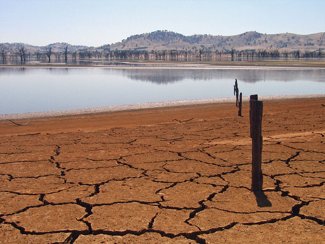Key findings across the regions include:
- Latin America and the Caribbean: Heat extremes and changing precipitation patterns will have adverse effects on agricultural productivity, hydrological regimes and biodiversity. In Brazil, without additional adaptation, crop yields could decrease by up to 70 percent for soybean and up to 50 percent for wheat at 2°C warming by 2050. Ocean acidification, sea level rise, tropical cyclones and temperature changes will impact coastal livelihoods, tourism, health, food and water security, particularly in the Caribbean. Melting glaciers would be a hazard for Andean cities.
- Middle East and North Africa: A large increase in heatwaves combined with warmer average temperatures will put intense pressure on already scarce water resources, with major consequences for human consumption and regional food security. In Jordan, Egypt, and Libya, crop yields could decrease by up to 30 percent at 1.5 to 2°C warming by 2050. Migration and climate‐related pressure on resources may also increase the risk of conflict.
- Western Balkans and Central Asia: Reduced water availability in some places becomes a threat as increases in temperatures head toward 4°C. Melting glaciers in Central Asia and shifts in the timing of water flows will lead to less water resources in summer months and high risks of torrential floods. In the Balkans, a higher risk of drought will impact crop yields, urban health, and energy generation. In Macedonia, crop yield losses are projected of up to 50 percent for maize, wheat, vegetables and grapes at 2°C warming by 2050.
The report also warns that if warming continues unabated, irreversible changes on a large scale could be triggered. In northern Russia, forest dieback and thawing of permafrost threaten to amplify global warming as stored carbon and methane are released into the atmosphere, giving rise to a self-amplifying feedback loop. Methane emissions could increase by 20 to 30 percent across Russia at 2°C warming by 2050.
“The report makes crystal clear that we cannot continue down the current path of unchecked, growing emissions. Leaders must step up and take the necessary decisions on how we manage our economies towards clean growth and resilient development,” said Rachel Kyte, World Bank Group Vice President and Special Envoy for Climate Change. “Urgent and substantial technological, economic, institutional and behavioural change is needed to reverse present trends. Economic development and climate protection can be complementary. We need the political will to make this happen.”
Click here to read/download the Full Report.
Source: The World Bank.
Notes:
[1] 4 degrees Celsius = 7.2 degrees Fahrenheit
About “Turn Down the Heat” Report Series
Turn Down the Heat: Confronting the New Climate Normal is the third in a series of reports commissioned by the World Bank Group from the Potsdam Institute for Climate Impact Research and Climate Analytics. The first report looked at risks globally if the world were to warm by 4°C. The second report focused on three regions – Africa, South Asia, and South East Asia – and the risks to food security, water security, and low-lying cities exposed to dangerous sea level rise and vulnerability to storms.
The new report comes on the heels of strong new warnings from the Intergovernmental Panel on Climate Change (IPCC) about the pace of climate change and the energy transformations necessary to stay within 2°C warming.


















